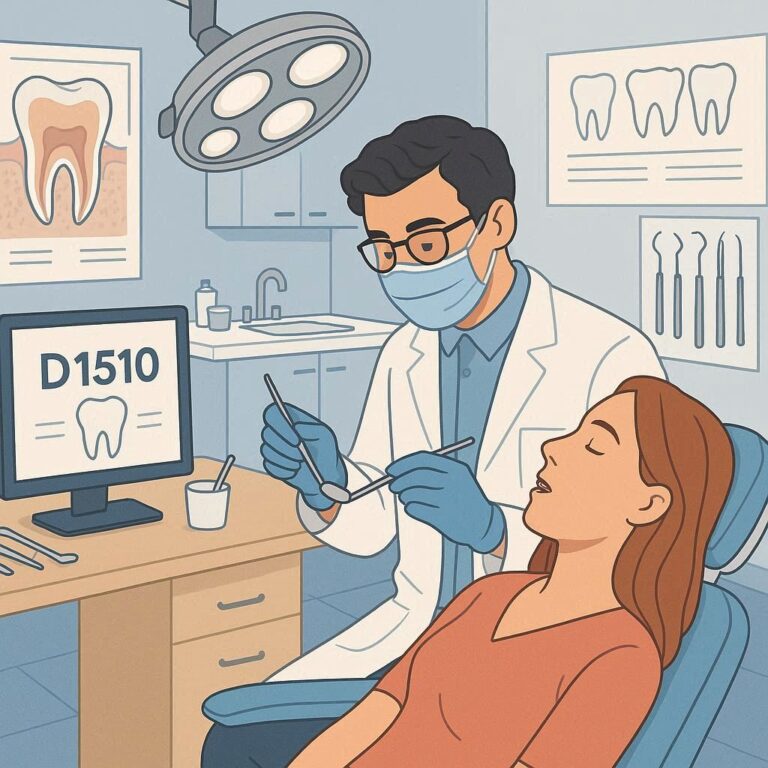Comprehensive Guide to D4277 Dental Code: Everything You Need to Know
In the ever-evolving field of dentistry, understanding specific dental codes is crucial for both practitioners and patients. The D4277 dental code represents a particular procedure that is integral to periodontal care and dental health. This article will delve into the D4277 dental code, providing a comprehensive exploration of its significance, applications, and implications within the dental industry.
Whether you are a dental professional seeking a deeper understanding of this procedure or a patient looking to grasp what the D4277 dental code entails, this guide will serve as a thorough resource. The following sections are meticulously researched and crafted to ensure clarity, relevance, and depth, making it a must-read for anyone interested in advanced dental procedures.

Understanding the D4277 Dental Code
Definition and Overview
The D4277 dental code is a specific classification under the Current Dental Terminology (CDT) system, which is maintained by the American Dental Association (ADA). It refers to a “Free Soft Tissue Graft Procedure (including donor site surgery) first tooth, implant, or edentulous tooth position in graft.” This procedure is primarily performed to address issues related to gum recession, bone loss, or to enhance the aesthetics of the gum line.
Historical Context and Evolution
The concept of soft tissue grafting in dentistry has evolved significantly over the years. Initially, such procedures were rudimentary, with limited understanding and tools available. However, with advancements in dental technology and techniques, the D4277 procedure has become a sophisticated and routine aspect of periodontal care. This section will trace the historical evolution of soft tissue grafting, highlighting the pivotal moments that have shaped the modern D4277 procedure.
Detailed Breakdown of the D4277 Procedure
Indications for D4277
The D4277 procedure is typically indicated in cases where there is significant gum recession, bone exposure, or a need for improved gum aesthetics. Patients who have experienced periodontal disease or trauma to the gum tissue may require this procedure. This section will explore the various clinical scenarios that necessitate the use of D4277, supported by case studies and expert opinions.
Step-by-Step Procedure
- Pre-Operative Assessment: Before performing a D4277 procedure, a comprehensive assessment of the patient’s oral health is essential. This involves a detailed examination of the gum tissues, bone structure, and overall dental health.
- Donor Site Selection: The success of a D4277 procedure hinges on the selection of an appropriate donor site. This section will discuss the criteria for selecting a donor site, including considerations for tissue compatibility and patient-specific factors.
- Surgical Procedure: The core of the D4277 procedure involves the precise surgical transfer of soft tissue from the donor site to the recipient area. This section will provide an in-depth look at the surgical techniques employed, including the use of modern tools and technologies that enhance the precision and success rate of the procedure.
- Post-Operative Care: Proper post-operative care is crucial for the success of the D4277 procedure. This section will outline the recommended care regimen, including medication, dietary restrictions, and follow-up visits to ensure optimal healing and outcomes.
Complications and Risk Management
Like any surgical procedure, the D4277 comes with potential risks and complications. This section will discuss common complications such as infection, graft failure, and aesthetic concerns, along with strategies for risk management and mitigation.
Benefits of the D4277 Procedure
Aesthetic Improvements
One of the primary benefits of the D4277 procedure is the significant improvement in the aesthetic appearance of the gums. Patients often report increased confidence and satisfaction with their smile post-procedure. This section will explore the aesthetic benefits of D4277, supported by before-and-after images and patient testimonials.
Functional Benefits
Beyond aesthetics, the D4277 procedure also offers functional benefits such as improved gum health, protection against further recession, and enhanced stability of the teeth. This section will delve into the functional advantages of D4277, including its role in preventing more severe periodontal issues.
Case Studies and Real-Life Applications
Case Study 1: Addressing Severe Gum Recession
This case study will examine a patient with severe gum recession who underwent the D4277 procedure. The study will cover the patient’s background, the treatment plan, and the outcomes achieved.
Case Study 2: Enhancing Aesthetic Outcomes
Focusing on a patient who sought the D4277 procedure primarily for aesthetic reasons, this case study will explore the psychological and social impacts of the procedure, in addition to the physical outcomes.
Comparison with Other Periodontal Procedures
D4277 vs. D4278
The D4278 code refers to a similar procedure, but with some key differences. This section will compare D4277 with D4278, highlighting the scenarios where each is most appropriate.
D4277 vs. D4265
This comparison will focus on the differences between soft tissue grafting and bone grafting procedures, providing insight into when each procedure is indicated.
Cost Implications of the D4277 Procedure
Breakdown of Costs
The cost of the D4277 procedure can vary significantly based on factors such as the dentist’s expertise, location, and the complexity of the case. This section will provide a detailed breakdown of the costs associated with D4277, including consultation fees, surgical costs, and post-operative care.
Insurance Coverage and Reimbursement
Understanding the insurance aspects of the D4277 procedure is crucial for both patients and practitioners. This section will discuss how the D4277 code is typically covered under dental insurance plans, including tips for maximizing reimbursement.
Patient Experience and Testimonials
Patient A: Overcoming Anxiety for a Better Smile
This testimonial will feature a patient who was initially anxious about undergoing the D4277 procedure but ultimately found the experience life-changing.
Patient B: The Long-Term Benefits of D4277
Focusing on a patient who underwent the D4277 procedure several years ago, this testimonial will explore the long-term benefits and satisfaction with the results.
Future Trends and Innovations in D4277
Advances in Surgical Techniques
With ongoing research and development in dental surgery, new techniques for performing the D4277 procedure are emerging. This section will discuss the latest innovations and what the future holds for D4277.
Potential for Non-Surgical Alternatives
Exploring the potential for non-surgical alternatives to D4277, this section will look at the latest research in regenerative medicine and its implications for soft tissue grafting.
Comparative Analysis of Periodontal Procedures
| Procedure Code | Procedure Name | Indications | Average Cost (USD) | Insurance Coverage (%) |
|---|---|---|---|---|
| D4277 | Free Soft Tissue Graft | Gum recession, bone exposure | $1,000 – $3,000 | 50-80% |
| D4278 | Soft Tissue Allograft | Gum recession, aesthetic enhancement | $1,500 – $4,000 | 50-80% |
| D4265 | Bone Grafting | Bone loss, tooth stability | $2,000 – $5,000 | 50-90% |
Conclusion
The D4277 dental code represents a vital procedure in periodontal care, offering significant aesthetic and functional benefits. Whether addressing gum recession or enhancing the overall appearance of the gum line, the D4277 procedure is a powerful tool in the hands of skilled dental professionals. Understanding the intricacies of this procedure, from the surgical steps to the cost implications, is crucial for anyone involved in dental care.
FAQs
1. What is the D4277 dental code?
- The D4277 code refers to a Free Soft Tissue Graft Procedure, including donor site surgery, typically used to address gum recession or improve gum aesthetics.
2. Is the D4277 procedure covered by insurance?
- Most dental insurance plans cover the D4277 procedure, but coverage levels can vary. It is advisable to check with your insurance provider for specific details.
3. What are the risks associated with the D4277 procedure?
- Common risks include infection, graft failure, and aesthetic concerns. However, with proper care and a skilled surgeon, these risks are minimized.
4. How long is the recovery period for D4277?
- Recovery typically takes 1-2 weeks, during which patients are advised to follow a strict oral care regimen to ensure proper healing.
5. Can D4277 be performed on any patient?
- While D4277 is suitable for many patients, those with certain medical conditions or severe periodontal disease may require alternative treatments.
Additional Resources
- Periodontology 2000: Advances in Soft Tissue Grafting
- Journal of Periodontology: Clinical Studies on Soft Tissue Grafts


